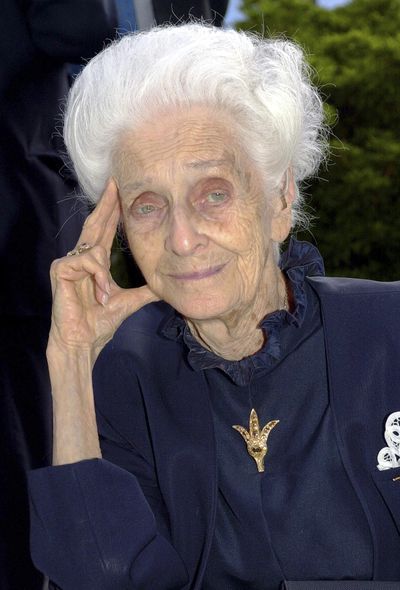‘Lady of the Cells,’ 103, dies

ROME – Rita Levi-Montalcini, a biologist who conducted underground research in defiance of Fascist persecution and went on to win a Nobel Prize for helping unlock the mysteries of the cell, died at her home in Rome on Sunday. She was 103 and had worked well into her final years.
Rome Mayor Gianni Alemanno, announcing her death in a statement, called it a great loss ‘’for all of humanity.” He praised her as someone who represented “civic conscience, culture and the spirit of research of our time.”
Italy’s so-called “Lady of the Cells,” a Jew who lived through anti-Semitic discrimination and the Nazi invasion, became one of her country’s leading scientists and shared the Nobel medicine prize in 1986 with American biochemist Stanley Cohen for their groundbreaking research carried out in the United States. Her research increased the understanding of many conditions, including tumors, developmental malformations, and senile dementia.
Italy honored Levi-Montalcini in 2001 by making her a senator-for-life.
A petite woman with upswept white hair, she kept an intensive work schedule well into old age. “At 100, I have a mind that is superior – thanks to experience – than when I was 20,” she said in 2009.
“A beacon of life is extinguished” with her death, said a niece, Piera Levi-Montalcini, who is a city councilwoman in Turin. She told the Turin daily newspaper La Stampa that her aunt passed away peacefully “as if sleeping” after lunch and that the scientist had kept up her research studies several hours a day “right up until the end.”
Levi-Montalcini was born April 22, 1909, to a Jewish family in the northern city of Turin. At age 20 she overcame her father’s objections that women should not study and obtained a degree in medicine and surgery from Turin University in 1936.
She studied under top anatomist Giuseppe Levi, whom she often credited for her own success and for that of two fellow students and close friends, Salvador Luria and Renato Dulbecco, who also became separate Nobel Prize winners. Levi and Levi-Montalcini were not related. After graduating, Levi-Montalcini began working as a research assistant in neurobiology but lost her job in 1938 when Italy’s Fascist regime passed laws barring Jews from universities and major professions.
Her family decided to stay in Italy and, as World War II neared, Levi-Montalcini created a makeshift lab in her bedroom where she began studying the development of chicken embryos, which would later lead to her major discovery of mechanisms that regulate growth of cells and organs.
The 1943 German invasion of Italy forced the Levi-Montalcini family to flee to Florence and live underground. After the Allies liberated the city, she worked as a doctor at a center for refugees.
In 1947 Levi-Montalcini was invited to the United States, where she remained for more than 20 years, which she called “the happiest and most productive” of her life. She held dual Italian-U.S. citizenship.
During her research at Washington University in St. Louis, Mo., she discovered nerve growth factor, the first substance known to regulate the growth of cells.
Italian scientist Pietro Calissano, who worked for some 40 years with Levi-Montalcini, including in the United States, said the work the Nobel laureate did on nerve growth factor was continuing. The protein assists portions of the central nervous system that have been damaged by disease or injury.